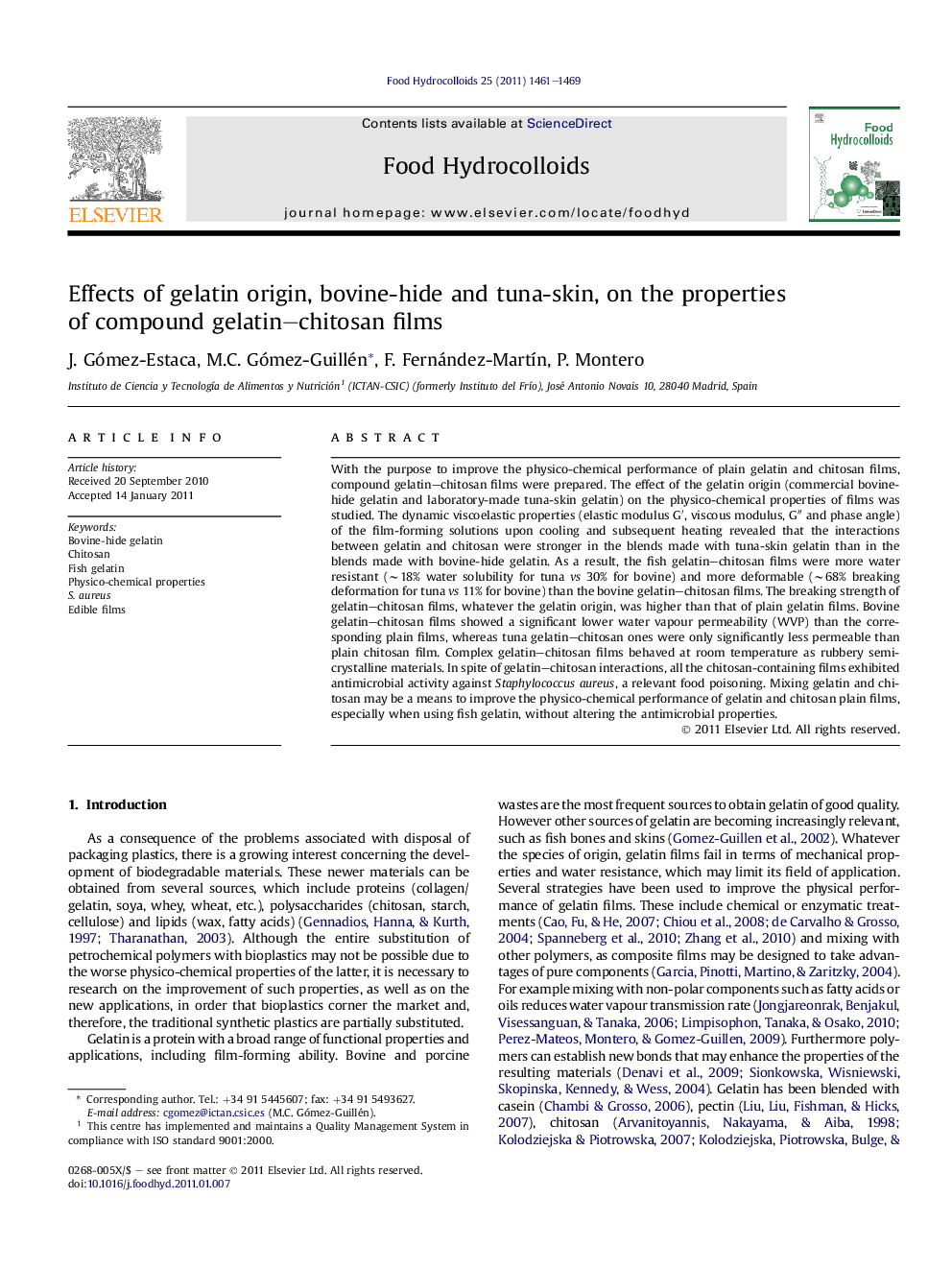| Article ID | Journal | Published Year | Pages | File Type |
|---|---|---|---|---|
| 604544 | Food Hydrocolloids | 2011 | 9 Pages |
With the purpose to improve the physico-chemical performance of plain gelatin and chitosan films, compound gelatin–chitosan films were prepared. The effect of the gelatin origin (commercial bovine-hide gelatin and laboratory-made tuna-skin gelatin) on the physico-chemical properties of films was studied. The dynamic viscoelastic properties (elastic modulus G′, viscous modulus, G″ and phase angle) of the film-forming solutions upon cooling and subsequent heating revealed that the interactions between gelatin and chitosan were stronger in the blends made with tuna-skin gelatin than in the blends made with bovine-hide gelatin. As a result, the fish gelatin–chitosan films were more water resistant (∼18% water solubility for tuna vs 30% for bovine) and more deformable (∼68% breaking deformation for tuna vs 11% for bovine) than the bovine gelatin–chitosan films. The breaking strength of gelatin–chitosan films, whatever the gelatin origin, was higher than that of plain gelatin films. Bovine gelatin–chitosan films showed a significant lower water vapour permeability (WVP) than the corresponding plain films, whereas tuna gelatin–chitosan ones were only significantly less permeable than plain chitosan film. Complex gelatin–chitosan films behaved at room temperature as rubbery semicrystalline materials. In spite of gelatin–chitosan interactions, all the chitosan-containing films exhibited antimicrobial activity against Staphylococcus aureus, a relevant food poisoning. Mixing gelatin and chitosan may be a means to improve the physico-chemical performance of gelatin and chitosan plain films, especially when using fish gelatin, without altering the antimicrobial properties.
Graphical abstractFigure optionsDownload full-size imageDownload as PowerPoint slide
